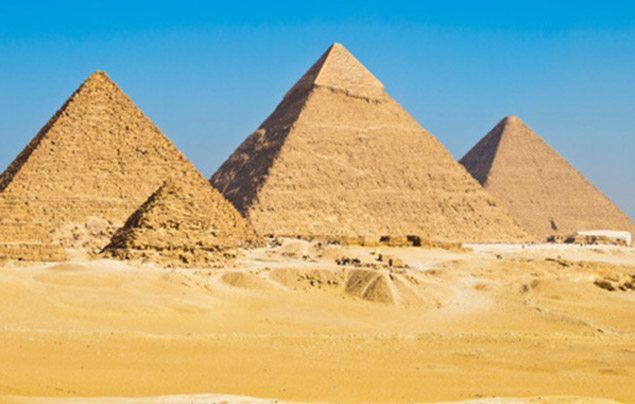Welcome to Facts Vibes! Uncover the mystique of the ancient Maya civilization with us. From advanced architecture to innovative hieroglyphic writing, we’ll delve into fascinating facts that shed light on this enigmatic culture. Join us as we journey back in time to explore the captivating world of the ancient Maya.
Uncovering the Mysteries of the Ancient Maya: Fascinating Facts and Insights
Uncovering the Mysteries of the Ancient Maya: Fascinating Facts and Insights
The ancient Maya civilization continues to captivate and intrigue scholars and enthusiasts alike with its enigmatic history, impressive architecture, and advanced understanding of astronomy and mathematics. Uncovering the mysteries of the ancient Maya provides us with a deep understanding of their society, religious beliefs, and cultural practices.
Fascinating facts about the ancient Maya include their development of a complex writing system using hieroglyphs, their intricate calendar system that accurately tracked time, and their architectural marvels such as the majestic pyramids and elaborate temples found at sites like Tikal and Chichen Itza.
Insights into the ancient Maya reveal a society deeply connected to nature, where rituals and ceremonies played a central role in their daily lives. Their elaborate knowledge of the stars and celestial events influenced not only their religious practices but also their agricultural cycles and urban planning.
Studying the ancient Maya civilization offers a unique window into a rich and sophisticated culture that thrived in Mesoamerica for centuries. Uncovering their mysteries allows us to appreciate their achievements, understand their worldview, and marvel at their enduring legacy.
Most popular facts
The ancient Maya civilization existed for over 2,000 years, from around 2000 BC to 1500 AD.
The ancient Maya civilization existed for over 2,000 years, from around 2000 BC to 1500 AD.
Mayan writing system consisted of hieroglyphs that were used to record historical events, rituals, and astronomy.
The Mayan writing system consisted of hieroglyphs that were used to record historical events, rituals, and astronomy.
The Mayans were skilled mathematicians and astronomers, developing a complex calendar system and accurate astronomical observations.
The Mayans were skilled mathematicians and astronomers, developing a complex calendar system and accurate astronomical observations.
The Maya built impressive stone cities, including Tikal, Chichen Itza, and Palenque, with advanced architectural features such as pyramids and temples.
The Maya built impressive stone cities with advanced architectural features like pyramids and temples.
They were known for their elaborate artwork, including intricate jade carvings and colorful murals.
The intricate jade carvings and colorful murals were notable features of their elaborate artwork.
The Mayans were accomplished agriculturalists, cultivating crops such as maize, beans, and squash using advanced techniques like terracing and irrigation.
The Mayans were accomplished agriculturalists, cultivating crops such as maize, beans, and squash using advanced techniques like terracing and irrigation.
Mayan society was highly stratified, with a ruling elite, priests, artisans, and farmers making up the social hierarchy.
Mayan society was highly stratified, with a ruling elite, priests, artisans, and farmers making up the social hierarchy.
The Maya practiced complex religious rituals, including bloodletting, human sacrifice, and elaborate ceremonies dedicated to their gods.
The Maya practiced complex religious rituals, including bloodletting, human sacrifice, and elaborate ceremonies dedicated to their gods.
Their ball game, called pok-a-tok, was a significant part of Mayan religious and social life, often associated with rituals and symbolism.
Pok-a-tok was a significant part of Mayan religious and social life, often associated with rituals and symbolism.
The Mayans were skilled traders, exchanging goods such as jade, obsidian, cacao, and feathers across Mesoamerica.
The Mayans were skilled traders, exchanging goods such as jade, obsidian, cacao, and feathers across Mesoamerica.
The collapse of many Mayan city-states around 900 AD remains a mystery, with factors such as overpopulation, environmental degradation, and warfare suggested as potential causes.
The collapse of many Mayan city-states around 900 AD remains a mystery, with factors such as overpopulation, environmental degradation, and warfare suggested as potential causes.
The Maya developed a sophisticated system of mathematics, including the concept of zero, which had a profound impact on later civilizations.
The Maya developed a sophisticated system of mathematics, including the concept of zero, which had a profound impact on later civilizations.
Mayan astronomers accurately predicted celestial events and understood the movements of planets, stars, and the moon.
Mayan astronomers accurately predicted celestial events and understood the movements of planets, stars, and the moon.
The Mayans had a strong belief in the cyclical nature of time, leading to the development of their Long Count calendar, which spans over 5,000 years.
The Mayans had a strong belief in the cyclical nature of time, which led to the development of their Long Count calendar, spanning over 5,000 years.
They were skilled in creating intricate pottery, weaving textiles, and crafting intricate jewelry using materials like gold, jade, and shell.
The individuals were skilled in creating intricate pottery, weaving textiles, and crafting intricate jewelry using materials like gold, jade, and shell.
In conclusion, the ancient Maya were a fascinating civilization with a rich cultural heritage and advanced knowledge in areas such as astronomy, mathematics, and architecture. Their legacy continues to captivate and inspire people around the world, shedding light on their remarkable achievements and enduring influence.
